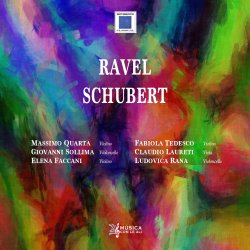

Maurice Ravel
Sonata for violin and cello
The first movement of Ravel’s “Duo pour violon et violoncelle” (this is the original title of the Sonata now on the program) appeared for the first time in the pages of "La revue musicale", a magazine that had just been founded, in a special issue published at the end of 1920 and entitled "Tombeau de Claude Debussy" because it is entirely dedicated to remembering the famous French composer, who died in 1918. For this collective celebration of Debussy’s music some of the most important composers of the time were involved and among them, besides Ravel, there were also Gian Francesco Malipiero (Hommage à Claude Debussy Op.28, for piano), Igor Stravinsky (Fragment des Symphonies pour instrument à vent, for wind instruments) and Manuel de Falla (Homenaje, for guitar). Almost two years had to pass before Ravel managed to complete, with a work that he himself called "avid", the Sonata for violin and cello, then published in 1922 and explicitly dedicated "à la memoire de Claude Debussy". Page with the instrumental combination very unusual and complex to manage and which resulted, at the premiere in Paris on 6 April 1922 (with the violinist Hélène Jourdan-Morhange, a great friend and then biographer of Ravel, and the cellist Maurice Maréchal) particularly confusing for the public and critics. What displaced were the lucid and rough language, marked by an angular essentiality that sometimes sounds even ferocious, and which is not infrequently taken to the extreme limits of tonality. Characters of which Ravel himself was well aware, as can be understood from his words, collected in 1928 by the musicologist Roland Manuel: "I believe that this Sonata marks a turning point in the evolution of my career. The stripping is pushed here to the extreme. Renunciation of the harmonic fascination; on the other hand, a more and more marked reaction in the sign of the melody".
A melody which, however, is never completely relaxed, but almost shrunken in its bare essentiality. And the resulting dryness is scratched by bumps in the timbres, by a bright sharpness in the rhythms, and not infrequently drawn by a sort of restlessness. You can already hear it in the 'Allegro d'inizio’, opened by an wavy figuration on the violin that supports the first theme, almost like a cantilena on the cello, but which with its obsessive progression is important in the development of the very dense intertwining of the voices of the two instruments. The following Très vif is dominated by the pungent frenzy of the pizzicati, both on the violin and on the cello, such as to give the lightning movement a hallucinatory atmosphere; it is an uninterrupted game of transformations and deformations, with folk dance movements (on the violin) that are reflected in grotesque gestures (on the cello), in a discourse carved also by aggressive accents and dissonant glimpses. A calm and deep melody characterizes instead the Lent: immediately at the beginning, the solo cello intones it, which here enhances its softer and warmer register, after having climbed, in the previous movements, for the most acute areas of its texture. That tune, severe but at the same time intense, is then taken up by the violin, and the two instruments come together in an absorbed and touching song, almost a prayer; towards the end, sinister rhythmic angularities affect it, but then it resumes its noble flow towards the subduedconclusion. The Vif avec entrain which concludes the Sonata is, on the other hand, very lively: the shape is that of a rondo, with a main theme characterized by the mechanical nature of the movement and by a bold intonation, of folkloric taste; around it are arranged a series of motifs, mostly taken from ideas of previous movements.
But the virtuosic vitality of the movement is governed by Ravel with the meticulous precision of a goldsmith, who in the final section mounts the gears of the musical discourse in a dense contrapuntal elaboration, until the dartin, conclusive re-proposal of the main theme.
Franz Schubert
Quintet for two violins, viola and two cellos in C major, Op.163 D.956
The Quintet 0.956 belongs to the extreme creative phase of Schubert, and shares the composition period with the last three Piano Sonatas: from a letter to the publisher Probst we know that, just like those, it was completed in October 1828 (and probably started in September 1828). A few weeks later, Schubert would have left this world forever, at only thirty-one years old. But if the Sonatas 0.958, 959 and 960 had already been performed privately with the author still alive, a different fate involve the Quintet ; and for the first printed edition it had to wait until 1853, twenty-five years after the death of the musician.
The perplexities of the publishers (expressed also for several other compositions of the last years of Schubert) were determined by the many executive difficulties encountered at the time, but in particular the extended dimensions, not to say gigantic, of a score whose duration went well beyond the usual chronological boundaries of a chamber music page. And in addition, the expressive contents were disorienting, those which today, together with the superb compositional magisterium demonstrated by Schubert, rightly assign the Quintet to the category of the masterpiece: not the amiable entertainment cordiality of a chamber music page, but very human anxieties and disturbances, tempered by flashes of longings to a serenity felt as impossible to reach definitively. The whole Quintet appears to be an intimate and desperately sincere confession. Masterpiece, unique in its kind also for the unusual instrumental combination, which has no matches in the literature of the Viennese musical Classicism of the time: to the canonical string quartet (two violins, viola, cello) Schubert joins a second cello, a full-bodied and grave instrumental voice that shifts the sound weight to a darker timbral dimension, and thickens the musical fabric making it suggestively close to the compact but variegated one of a symphony. Restlessness, it was said, as in that thrill of a long crescendo note that soon folds into a shadow, immediately at the beginning of the Allegro, and from which the main theme gradually takes shape with its increasingly dramatic appearance. From here, in a play of narrow concatenations that is characteristic of the entire movement, Schubert creates the second theme, with a markedly melodic nature: it is an intense and poignant, almost imploring, motif and is sung by the two cellos on a soft pizzicato accompaniment.
An idea that turns out to be fundamental, because Schubert subjects it to continuous transformations; just as determining in the development will be that sort of third theme that timidly emerges in this first section: a march, almost hinted at but well defined in its graceful military step. Schubert uses all this material with a surprising ability: he builds a pressing dialogue between the five instrumental voices, where ideas regenerated from each other, and which, above all, carries within itself a sense of consequentiality that is stringent as it is charged with tensions. The Adagio that follows represents the expressive heart of the entire Quintet; it is the moment of the deepest confession. Almost unreal in its sinister fixity and all pervaded by a sense of bewilderment, the atmosphere evoked at the beginning plays, with that theme entrusted to the first violin, on the hypnotic pizzicati of the second cello and on the aseptic background created by the other three strings. It is an endless theme, which proceeds hesitantly, and arrives as a supplication, full of unanswered questions.
Then, suddenly, a dramatic gash, the harmony violently folds back to the minor tonality, violin and cello launch together in a desperate gesture, while the second cello abandons itself to a deaf rumbling, like a thunder in the distance. The vehemence of the episode is diluted in the resumption of the opening theme, which however is now relaxed and decorated with iridescent arabesques in the lyrical dialogue between the first violin and the second cello; the atmosphere returns to rarefy, as at the beginning of the movement, but the rapid appearance of the dramatic tremor that had shaken the movement is, in the nearness of the conclusion, like a sinister shadow, which acts as a warning to the apparent achieved calm. The following Scherzo has a decidedly symphonic breath: it is characterized by a sonorous fullness of orchestral taste and the energetic exuberance of rhythm, with a rustic popular flavor. But even here there

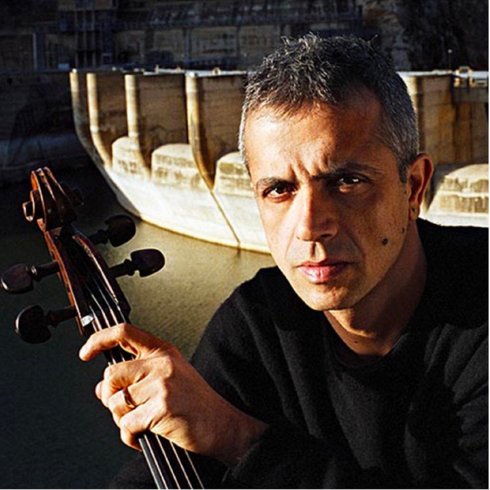
Giovanni Sollima
Is an internationally renowned cellist and Italian composer whose works are among the most performed in the world. He has collaborated with Riccardo Muti, Yo-Yo Ma, Ivan Fischer, Viktoria Mullova, Ruggero Raimondi, Mario Brunello, Kathryn Stott, Giuseppe Andaloro, Toni Florio, Yuri Bashmet, Katia and Marielle Labeque, Giovanni Antonini, Ottavio Dantone, Patti Smith, Stefano Bollani, Paolo Fresu, Antonio Albanese and with orchestras such as the Chicago Symphony Orchestra, Manchester Camerata, Liverpool Philharmonic (Artist in Residence 2015), Royal Concertgebouw Orchestra, Moscow Soloists, Berlin Konzerthausorchester, Australian Chamber Orchestra, Il Giardino armonico, Cappella Neapolitana, Accademia Bizantina, Holland Baroque Society, Budapest Festival Orchestra.
He composed music for Peter Greenaway, John Turturro, Bob Wilson, Carlos Saura, Marco Tullio Giordana, Peter Stein, Lasse Gjertsen, Anatoly Vasiliev, Karole Armitage and Carolyn Carlson. He has performed at the Alice Tully Hall, Knitting Factory, Carnegie Hall (New York), Wigmore Hall, Queen Elizabeth Hall (London), Salle Gaveau (Paris), Teatro alla Scala (Milan), Opera House (Sydney), Suntory Hall (Tokyo). Since 2010 he teaches at the National Academy of Santa Cecilia, where he is awarded the title of Academic. In 2012, together with Enrico Melozzi, he founded the 100 Cellos. In 2015 he composed the sound logo of Expo in Milan and inaugurated the new museum space of the Pietà Rondanini, by Michelangelo. Giovanni explores different genres using ancient, oriental, electric and inventive instruments, playing in the Sahara desert, underwater and with an ice cello. His discography began in 1998 with a CD produced by Philip Glass for Point Music, followed by eleven albums for Sony, Egea and Decca. He brought to light the eighteenth-century musician, Giovanni Battista Costanzi, of whom he recorded the Sonatas and Symphonies for cello and basso continuo for the Glossa record label. In October 2018 he received the Anner Bijlsma Award at the Cello Biennale in Amsterdam.
He plays a cello by Francesco Ruggieri (Cremona, 1679)
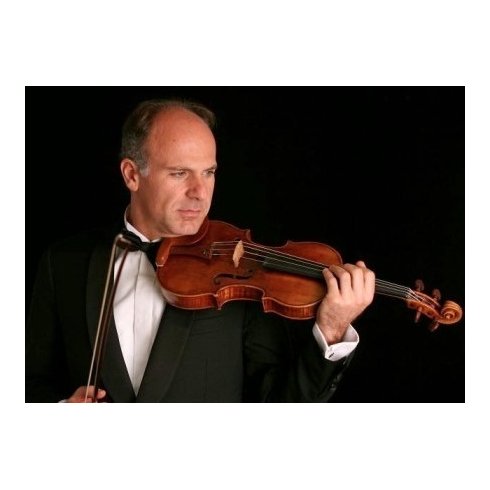
Massimo Quarta
Winner of the First Prize at the National Violin Competition Città di Vittorio Veneto (1986) and winner of the First Prize at the Violin Competition Opera Prima Philips (1989), in 1991 Massimo Quarta won also the First Prize at the prestigious International Violin Competition N. Paganini in Genova. His concert activity led him to perform for various prestigious concert institutions, playing with the most renowned conductors such as Yuri Temirkanov, Myun Wun Chung, Christian Thielemann, Daniele Gatti, Daniel Harding, Vladimir Yurowsky, John Axelrod, Janjo Mena, Sir Peter Maxwell Davies, Aldo Ceccato, Vladimir Spivakov, Isaac Karabtvchevsky, Daniel Oren. Among the most important violinists of his generation, he was a guest of major festivals such as Stresa, Naples, Città di Castello, Kuhmo, Bodensee, Kfar Blum, Berliner Festwochen, Sarasota, Ravenna, Lyon, Potsdam, Spoleto, Ljubjana and, invited by Gidon Kremer, the Lockenhaus "Kammermusikfest". Born in 1965, Quarta began studying violin at the age of eleven at the T. Schipa Conservatory in Lecce, then he continued his studies with Beatrice Antonioni at the S. Cecilia Conservatory in Rome. He later perfected his technique with Salvatore Accardo, Ruggero Ricci, Pavel Vernikov and Abram Shtern. Despite his intense solo activity, for more than twenty-five years he has worked also as conductor, conducting orchestras such as the Royal Philharmonic Orchestra, the Malaga Philharmonic Orchestra, the Berliner Symphoniker, the Netherland Symphony Orchestra, the Shenzhen Symphony Orchestra, the Orchestra della Svizzera Italiana (OSI), the Symphony Orchestra of Sŏnderborg (Denmark), the National Symphony Orchestra of Buenos Aires, the Orchestra of Teatro Carlo Felice of Genova, I Pomeriggi Musicali of Milan, the Orchestra of Padova and Veneto, the Philharmonic and Symphonic A. Toscanini, the Haydn Orchestra of Bolzano.
He made his debut at the Musikverein in Vienna as a soloist and conductor with the Vienna Philharmonia, at the Concertgebouw in Amsterdam conducting the Netherland Symphony Orchestra and he recorded as conductor with the Royal Philharmonic Orchestra the Mozart’s Concertos for two and three pianos. He held the position of soloist and principal conductor of the Orchestra of the Abruzzese symphonic institution and was artistic Musical Director of the Orchestra of the I.C.O. Tito Schipa Foundation of Lecce. He is currently Music Director of the UNAM Philharmonic Orchestra (OFUNAM) in Mexico City. Massimo Quarta was awarded the Foyer Des Artistes International Award and the Gino Tani International Award for the Performing Arts. He recorded for Philips, le Quattro Stagioni by A. Vivaldi with the Moscow Chamber Orchestra for Delos , the 24 Capricci by Paganini for the English label company Chandos, a CD with music by N. Paganini for Dynamic, and, again by Paganini, the “Integrale of the 6 Concertos for violin and orchestra” in autograph version as violinist and conductor, Integrale considered "real milestone for all fans of the violin" (Il Giornale della Musica). Also for Dynamic were published the Concerti n. 4 and 5 by H. Vieuxtemps, with Massimo in the role of soloist and conductor with the Haydn Orchestra of Bolzano,
He obtained wide acclaim from the international press ( CHOC Award of "Le Monde de la Musique"), for revolutionary aspect given to the reinterpretation of the Paganinian repertoire that has conquered the public, assigning him a place of honor among the most famous violinists (The Strad) and calling it "the personification of elegance" (American Record Guide). Among his upcoming recording projects is the recording of “Romanze op. 40 and op. 50” by Beethoven for violin and orchestra, for Warner Classics.
For Warner Classics, he has recently recorded the “6 Sonatas and Partitas for solo violin” by J. S. Bach.
Quarta is an Academic of Santa Cecilia and teaches at the Conservatory of the Italian Switzerland in Lugano (Musikhochschule).
He plays a violin G. A. Rocca of 1840.

Elena Faccani
Born in Bologna, she graduated with full marks in violin in Milan at the “G. Verdi ”and in viola in Piacenza at the“ G. Nicolini ". His studies continued in Geneva with C. Romano, at the Accademia Chigiana and with G. Carmignola and F. Gulli, always obtaining scholarships and awards. In 1997 he performed Beethoven's Concerto for violin and orchestra in the Verdi Hall in Milan and won the second prize at the Vittorio Veneto Violin Festival. Winner of scholarships, she attended F. Manara's lessons at the "L. Perosi "in Biella, and won the third prize at the International Competition of the same name. She was the First Violin of the Accademia della Scala Philharmonic Orchestra, giving concerts in various Italian cities, conducted by W. Sawallisch, I. Karabatchevsky, I. Temirkanov. She was a student of A. Chumachenco, graduating from the "L. Perosi ”in Biella (full marks and special mention by the Jury). In 2001 he won the International Competition of the Teatro alla Scala chaired by Riccardo Muti and is a permanent member of the Orchestra in the row of First Violins. As a solo violist he performed Mozart's Sinfonia Concertante with the Regional Orchestra of Tuscany. He won the “Barbirolli” prize at the ninth edition of the “Lionel Tertis” International Viola Competition (Great Britain) awarded to the competitor with the most beautiful sound.
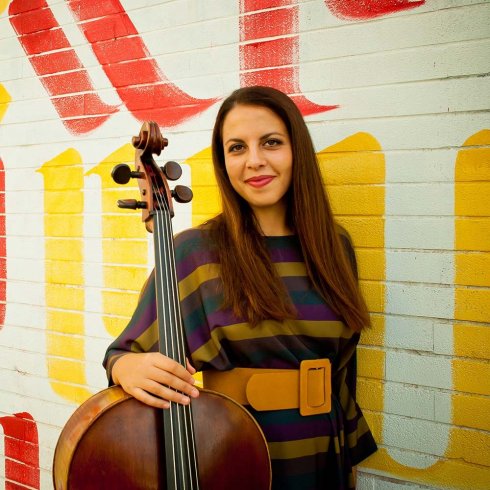
Ludovica Rana
Ludovica Rana is 22 years old; she began studying music at the age of 4 under the guidance of her parents, both musicians, and, despite her young age, she has already established herself in prestigious competitions such as the 30th Rassegna Nazionale d'Archi "Mario Benvenuti" in Vittorio Veneto in 2010, receiving a scholarship, the Prize "The Note Zagreb" at the 9th International Competition for Young Cellists "Antonio Janigro" in Croatia in 2012; in 2016 she was awarded the First Prize at the International Music Competition 'Vienna' Grand Prize Virtuoso and the "Young Virtuoso Award" at the 1st Manhattan International Music Competition in New York. She received a special mention at the Arts Award of MIUR (Ministry of University and Research) in September 2012. Ludovica has also won several national competitions such as "Euterpe" in Corato, "City of Casamassima", "Land Award of Imperials" in Francavilla, "Rosa Ponselle" in Matera. In May 2014, Ludovica won the 1st prize of the Special Section of the "Premio Francesco Geminiani" receiving on loan the cello of Maestro Giovanni Lazzaro (Padua 2011) called "Furibondo". In June of the same year, Ludovica graduated with honors at the Istituto Musicale "Giovanni Paisiello" in Taranto (in the class of Maestro Andrea Agostinelli). She attended the Pavia Cello Academy and obtained a master’s Degree in Music Performance at the Swiss Italian Conservatory in Lugano under the guidance of Maestro Enrico Dindo. She is currently attending the Courses of Specialization in Cello with Maestro Giovanni Sollima and in Chamber Music with Maestro Carlo Fabiano at the Accademia di Santa Cecilia in Rome, and at the Menuhin Academy in Rolle under the guidance of Maestro Pablo de Navèran. Since 2018 she has been supported by the Cultural Association Musica con le Ali, performing at the “Musica a Villa Durio (Varallo)” season. She plays a Claude - Augustin Miremont cello dated 1870.

Claudio Laureti
Claudio Laureti Born in Rome in 1994, once he graduated from the Santa Cecilia Conservatory under Margot Burton and Luca Sanzò, Laureti went on to take a first Master in Music at the Haute Ecole de Musique de Lausanne. Currently he is continuing to refine his studies under the guidance of Alexander Zemtsov at the Hochschule für Musik und Tanz in Cologne, at the Orchesterzentrum of Dortmund, and also with the Accademia Walter Stauffer of Cremona. He has won prizes at the Anton Rubinstein International Competition, Virtuoso & Belcanto and Premio Clivis, and taken part in masterclasses held by world famous teachers. As a chamber music artist he has performed with Karl-Heinz Steffens, Franco Petracchi, Thomas Duis and Alexander Hülshoff, and has collaborated with establishments such as the William Walton of Forio d’Ischia Foundation (IT), Villa Musica Rheinland-Pfalz (DE), Aurora Chamber Music (S), and the Swiss Chamber Academy (CH). Since 2018 he has been a member of the European Union Chamber Orchestra and the Mahler Chamber Orchestra Academy. Furthermore he has collaborated with the Orchestre de Chambre de Lausanne, Orchestra Roma Sinfonietta and the Imago Sonora Contemporary Ensemble, and with conductors such as Antonio Pappano, Andres Orozco-Estrada, Joshua Weilerstein and Riccardo Muti. Since 2019 he is kindly supported by the Associazione Culturale Musica con le Ali, thanks to which he performs in several prestigious venues all across Italy, alongside some of the best musicians of the country. In 2020, as a result of this collaboration, he has published his first CD, recorded live at the Teatro la Fenice in Venice with Giovanni Sollima, Massimo Quarta and other young Italian talents.He is furthermore supported by the program NeuStart Kultur of the Deutscher Musikrat, and since 2018 he takes regularly part in the projects of the Lead! Foundation Finland. Since 2021 he is scholarship holder of the foundation Villa Musica Rheinland-Pfalz. He has cooperated with ensembles such as Orchestre de Chambre de Lausanne, Orchestra dell’Accademia Nazionale di Santa Cecilia, Kölner Kammerorchester, Finnish Chamber Orchestra, Mahler Chamber Orchestra and European Union Chamber Orchestra, under the baton of, among others, Antonio Pappano, Esa-Pekka Salonen, Vassily Sinaisky, Jorma Panula, Andrés Orozco-Estrada, Klaus Mäkela, Jukka-Pekka Saraste, Juraj Valcuha, Sakari Oramo and Leif Segerstam.
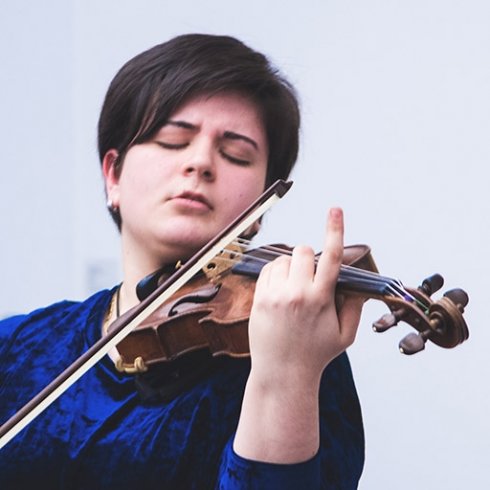
Fabiola Tedesco
20-year-old Italian violinist, Fabiola Tedesco, “plays the violin with brilliance, sound interpretive skills and an intense ability to create and sustain tension”. (Süddeutsche Zeitung) At the age of 16 she graduated with distinction from the Music Conservatory in Turin, her home town, where she was tutored by Professor Sergio Lamberto. Since 2013 she has been studying violin with Professor Rudens Turku at the Vorarlberger Landeskonservatorium in Feldkirch, Austria. Since 2011 she has attended various masterclasses with Professor Ana Chumachenco throughout Europe. She also receives a scholarship from the International Academy of Music in Liechtenstein, where she regularly participates in the intensive music weeks. The young violinist has already been awarded numerous first prizes, for example at the “Concorso Vittorio Veneto”, the “Premio Antonio Salieri”, the “City of Turin Prize”, the “Rotary Prize”, the “Premio Pugnani”, the “Filarmonica della Scala” Prize and at the soloist competition of the Vorarlberger Landeskonservatorium. Fabiola Tedesco has performed at acclaimed festivals such as the MITO music festival, the “Musei Vaticani” Festival in Rome, the “Starnberger Musiktage”, “Talente im Funkhaus” (ORF), the “Festival Europeo de Solistas” (Caracas), “Polincontri”, the “Seefelder Musiktage”, and the FESTIVAL NEXT GENERATION Bad Ragaz. She has given concerts in Europe, North America and South America. She has performed as a soloist with the Orchestra of the Turin Music Conservatory, the Orchestra Sabauda, the Kiev Philharmonic Orchestra, the Orchestra of the University of Innsbruck, the Orchestra of the Vorarlberger Landeskonservatorium, the OSUAT, the Collegium Musicum Ostschweiz and the Orquesta Sinfónica Juvenil “José Francisco del Castillo”, and has played under the batons of G. Ratti, V. Sheiko, B. Lack, C. Büchler, M. Schwarz, J. J. Maldonado and A. Gonzales. In May 2016, she undertook a concert tour through Venezuela, and performed Tchaikovsky’s Violin Concerto at the “Festival Europeo de Solistas”. Additionally, she is a member of the Liechtenstein Symphony Orchestra, and will perform as a soloist with the orchestra in September 2018, as part of the Friends concert. The young violinist receives scholarships from the “Fondazione CRT”, the “Fondazione DE SONO”, the “Friends of Rudens Turku e.V.” society and the International Academy of Music in Liechtenstein. She plays an Alessandro D’Espine violin (1825), which has been loaned to her from the Music Masterpieces foundation in Lugano (Switzerland).
